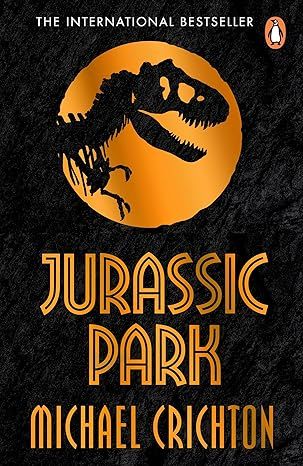Jurassic Park
4.7
-
26,554 ratings
#1 NEW YORK TIMES BESTSELLER • From the author of Timeline, Sphere, and Congo, this is the classic thriller of science run amok that took the world by storm.
Nominated as one of America’s best-loved novels by PBS’s The Great American Read
An astonishing technique for recovering and cloning dinosaur DNA has been discovered. Now humankind’s most thrilling fantasies have come true. Creatures extinct for eons roam Jurassic Park with their awesome presence and profound mystery, and all the world can visit them—for a price.
Until something goes wrong. . . .
In Jurassic Park, Michael Crichton taps all his mesmerizing talent and scientific brilliance to create his most electrifying technothriller.
Kindle
$9.99
Available instantly
Audiobook
$0.00
with membership trial
Library Binding
$18.72
Paperback
$16.93
Ships from
Amazon.com
Payment
Secure transaction
ISBN-10
1784752223
ISBN-13
978-1784752224
Print length
480 pages
Language
English
Publisher
Arrow Books
Publication date
May 24, 2015
Dimensions
5.04 x 1.14 x 7.76 inches
Item weight
11.6 ounces
Popular Highlights in this book
All major changes are like death, he said. You can’t see to the other side until you are there.
Highlighted by 3,115 Kindle readers
Story of our species, Malcolm said, laughing. Everybody knows it’s coming, but not so soon.
Highlighted by 3,113 Kindle readers
All major changes are like death, he said. You can’t see to the other side until you are there.
Highlighted by 1,591 Kindle readers
Product details
ASIN :
1784752223
File size :
5941 KB
Text-to-speech :
Enabled
Screen reader :
Supported
Enhanced typesetting :
Enabled
X-Ray :
Enabled
Word wise :
Enabled
Editorial Reviews
“[Michael] Crichton’s dinosaurs are genuinely frightening.”—Chicago Sun-Times
“Wonderful . . . powerful.”—The Washington Post Book World
“Frighteningly real . . . compelling . . . It’ll keep you riveted.”—The Detroit News
“Full of suspense.”—The New York Times Book Review
Sample
ALMOST PARADISE
Mike Bowman whistled cheerfully as he drove the Land Rover through the Cabo Blanco Biological Reserve, on the west coast of Costa Rica. It was a beautiful morning in July, and the road before him was spectacular: hugging the edge of a cliff, overlooking the jungle and the blue Pacific. According to the guidebooks, Cabo Blanco was unspoiled wilderness, almost a paradise. Seeing it now made Bowman feel as if the vacation was back on track.
Bowman, a thirty-six-year-old real estate developer from Dallas, had come to Costa Rica with his wife and daughter for a two-week holiday. The trip had actually been his wife’s idea; for weeks Ellen had filled his ear about the wonderful national parks of Costa Rica, and how good it would be for Tina to see them. Then, when they arrived, it turned out Ellen had an appointment to see a plastic surgeon in San Jose. That was the first Mike Bowman had heard about the excellent and inexpensive plastic surgery available in Costa Rica, and all the luxurious private clinics in San Jose.
Of course they’d had a huge fight. Mike felt she’d lied to him, and she had. And he put his foot down about this plastic surgery business. Anyway, it was ridiculous, Ellen was only thirty, and she was a beautiful woman. Hell, she’d been Homecoming Queen her senior year at Rice, and that was not even ten years earlier. But Ellen tended to be insecure, and worried. And it seemed as if in recent years she had mostly worried about losing her looks.
That, and everything else.
The Land Rover bounced in a pothole, splashing mud. Seated beside him, Ellen said, “Mike, are you sure this is the right road? We haven’t seen any other people for hours.”
“There was another car fifteen minutes ago,” he reminded her. “Remember, the blue one?”
“Going the other way . . .”
“Darling, you wanted a deserted beach,” he said, “and that’s what you’re going to get.”
Ellen shook her head doubtfully. “I hope you’re right.”
“Yeah, Dad, I hope you’re right,” said Christina, from the backseat. She was eight years old.
“Trust me, I’m right.” He drove in silence a moment. “It’s beautiful, isn’t it? Look at that view. It’s beautiful.”
“It’s okay,” Tina said.
Ellen got out a compact and looked at herself in the mirror, pressing under her eyes. She sighed, and put the compact away.
The road began to descend, and Mike Bowman concentrated on driving. Suddenly a small black shape flashed across the road and Tina shrieked, “Look! Look!” Then it was gone, into the jungle.
“What was it?” Ellen asked. “A monkey?”
“Maybe a squirrel monkey,” Bowman said.
“Can I count it?” Tina said, taking her pencil out. She was keeping a list of all the animals she had seen on her trip, as a project for school.
“I don’t know,” Mike said doubtfully.
Tina consulted the pictures in the guidebook. “I don’t think it was a squirrel monkey,” she said. “I think it was just another howler.” They had seen several howler monkeys already on their trip.
“Hey,” she said, more brightly. “According to this book, ‘the beaches of Cabo Blanco are frequented by a variety of wildlife, including howler and white-faced monkeys, three-toed sloths, and coatimundis.’ You think we’ll see a three-toed sloth, Dad?”
“I bet we do.”
“Really?”
“Just look in the mirror.”
“Very funny, Dad.”
The road sloped downward through the jungle, toward the ocean.
Mike Bowman felt like a hero when they finally reached the beach: a two-mile crescent of white sand, utterly deserted. He parked the Land Rover in the shade of the palm trees that fringed the beach, and got out the box lunches. Ellen changed into her bathing suit, saying, “Honestly, I don’t know how I’m going to get this weight off.”
“You look great, hon.” Actually, he felt that she was too thin, but he had learned not to mention that.
Tina was already running down the beach.
“Don’t forget you need your sunscreen,” Ellen called.
“Later,” Tina shouted, over her shoulder. “I’m going to see if there’s a sloth.”
Ellen Bowman looked around at the beach, and the trees. “You think she’s all right?”
“Honey, there’s nobody here for miles,” Mike said.
“What about snakes?”
“Oh, for God’s sake,” Mike Bowman said. “There’s no snakes on a beach.”
“Well, there might be. . . .”
“Honey,” he said firmly. “Snakes are cold-blooded. They’re reptiles. They can’t control their body temperature. It’s ninety degrees on that sand. If a snake came out, it’d be cooked. Believe me. There’s no snakes on the beach.” He watched his daughter scampering down the beach, a dark spot on the white sand. “Let her go. Let her have a good time.”
He put his arm around his wife’s waist.
Tina ran until she was exhausted, and then she threw herself down on the sand and gleefully rolled to the water’s edge. The ocean was warm, and there was hardly any surf at all. She sat for a while, catching her breath, and then she looked back toward her parents and the car, to see how far she had come.
Her mother waved, beckoning her to return. Tina waved back cheerfully, pretending she didn’t understand. Tina didn’t want to put sunscreen on. And she didn’t want to go back and hear her mother talk about losing weight. She wanted to stay right here, and maybe see a sloth.
Tina had seen a sloth two days earlier at the zoo in San Jose. It looked like a Muppets character, and it seemed harmless. In any case, it couldn’t move fast; she could easily outrun it.
Now her mother was calling to her, and Tina decided to move out of the sun, back from the water, to the shade of the palm trees. In this part of the beach, the palm trees overhung a gnarled tangle of mangrove roots, which blocked any attempt to penetrate inland. Tina sat in the sand and kicked the dried mangrove leaves. She noticed many bird tracks in the sand. Costa Rica was famous for its birds. The guidebooks said there were three times as many birds in Costa Rica as in all of America and Canada.
In the sand, some of the three-toed bird tracks were small, and so faint they could hardly be seen. Other tracks were large, and cut deeper in the sand. Tina was looking idly at the tracks when she heard a chirping, followed by a rustling in the mangrove thicket.
Did sloths make a chirping sound? Tina didn’t think so, but she wasn’t sure. The chirping was probably some ocean bird. She waited quietly, not moving, hearing the rustling again, and finally she saw the source of the sounds. A few yards away, a lizard emerged from the mangrove roots and peered at her.
Tina held her breath. A new animal for her list! The lizard stood up on its hind legs, balancing on its thick tail, and stared at her. Standing like that, it was almost a foot tall, dark green with brown stripes along its back. Its tiny front legs ended in little lizard fingers that wiggled in the air. The lizard cocked its head as it looked at her.
Tina thought it was cute. Sort of like a big salamander. She raised her hand and wiggled her fingers back.
The lizard wasn’t frightened. It came toward her, walking upright on its hind legs. It was hardly bigger than a chicken, and like a chicken it bobbed its head as it walked. Tina thought it would make a wonderful pet.
She noticed that the lizard left three-toed tracks that looked exactly like bird tracks. The lizard came closer to Tina. She kept her body still, not wanting to frighten the little animal. She was amazed that it would come so close, but she remembered that this was a national park. All the animals in the park would know that they were protected. This lizard was probably tame. Maybe it even expected her to give it some food. Unfortunately she didn’t have any. Slowly, Tina extended her hand, palm open, to show she didn’t have any food.
The lizard paused, cocked his head, and chirped.
“Sorry,” Tina said. “I just don’t have anything.”
And then, without warning, the lizard jumped up onto her outstretched hand. Tina could feel its little toes pinching the skin of her palm, and she felt the surprising weight of the animal’s body pressing her arm down.
And then the lizard scrambled up her arm, toward her face.
“I just wish I could see her,” Ellen Bowman said, squinting in the sunlight. “That’s all. Just see her.”
“I’m sure she’s fine,” Mike said, picking through the box lunch packed by the hotel. There was unappetizing grilled chicken, and some kind of a meat-filled pastry. Not that Ellen would eat any of it.
“You don’t think she’d leave the beach?” Ellen said.
“No, hon, I don’t.”
“I feel so isolated here,” Ellen said.
“I thought that’s what you wanted,” Mike Bowman said.
“I did.”
“Well, then, what’s the problem?”
“I just wish I could see her, is all,” Ellen said.
Then, from down the beach, carried by the wind, they heard their daughter’s voice. She was screaming.
Read more
About the authors
Michael Crichton
MICHAEL CRICHTON the author of the groundbreaking novels Jurassic Park, The Andromeda Strain, The Great Train Robbery, Disclosure, Prey, State of Fear, Sphere, Congo, Next and Micro among many others. His books have sold more than 200 million copies worldwide, have been translated into thirty-eight languages, and have provided the basis for fifteen feature films, most notably Jurassic Park. He directed Westworld, Coma, The Great Train Robbery and Looker, and also created the hit television series ER. Crichton remains the only writer to have a number one book, movie, and TV show in the same year.
Read more
Reviews
Customer reviews
4.7 out of 5
26,554 global ratings
Andrew McNiel
5
Same core premise but different storyline.
Reviewed in the United States on August 1, 2024
Verified Purchase
Felt like a new Jurassic Park story… did not ruin the movies for me, just enhanced it! So glad I finally read it!
Sammy
5
Favorite book of all time
Reviewed in the United States on June 2, 2024
Verified Purchase
The writing is… AMAZING!
Melissa moon
5
Wonderfully thrilling with surprising realism.
Reviewed in the United States on December 13, 2018
Verified Purchase
Michael Crichton does an outstanding job at merging realism with science fiction with his most popular novel ‘Jurassic Park’. The mix between just enough realistic details and events blends perfectly with the somewhat hard to believe premise of recreating dinosaurs that take over their habitat. Between the excellent setting buildup and compelling characters that have a very strong sense of humanity, this book is perfect for anyone looking for a fun book to read. ‘Jurassic Park’ also has a deep underlining meaning often portrayed through the character Ian Malcolm. Ian Malcolm really describes the situation and boils them down into what seems like a real-life scenario, through his deep philosophical under tones to his description of patterns throughout nature, giving this book a surprisingly thoughtful and concerning tone that correlates with the world around you. Crichton splits the book perfectly as you bounce between characters and scenarios, changing the mood drastically, whilst still maintaining the flow of the novel between chapters. Whilst the first 50 pages or so can seem like a task, as soon as the cast gets on their way and begin establishing these bonds and showing their true character, you will find yourself glued to the book until the final few pages. Once the climax starts, it does not stop until the very last page, where you will find yourself thoroughly enjoying the journey Crichton created. The two young children in this book, Lex and Tim, are also outstanding contributions and are actually really competent for their age, and their journey with Dr. Grant leads to the 3 establishing strong bonds through the countless life or death situations. The description and realism of the process of creating dinosaurs and the dinosaurs themselves makes it immediately apparent that Crichton spent hours upon hours of research to make sure everything he was saying was factually realistic. Between how they obtained the dinosaur DNA and the entire shady and grim process Wu and Hammond do not tell you is really great and surprisingly interesting. Also, the great descriptions of violence and gore is done quite well and Crichton shifts between sudden and intense descriptions, to very subtle small references leading up to certain characters demise. This switch of tones and descriptions really adds to the entire novel through the outstanding use of words. The description of scenery and surroundings is also very adept in this novel, and it makes you almost feel like you are truly in a humid, moist theme-park located in a random island of the coast of Costa Rica. The description of the giant and cumbersome beast’s and the intelligent input Dr. Sattler and other characters bring to the table is also very interesting to watch as it grows and expands almost seamlessly. And no two dinosaurs are remotely alike, they are all so different and portray completely different ideas of what you may know about dinosaurs. This book was truly a joy to read and if you are on the fence about buying it, please do so, you will not regret it. Crichton’s ability to write such a genius piece whilst keeping it thrilling and entertaining with intelligent details and an immersive setting to tie it together is truly amazing and outstanding. This is one of the most compelling novels I have read and I greatly recommend you purchase this book to experience Crichton’s expert abilities.
Read more
6 people found this helpful
FoxysMom
5
Fun action adventure
Reviewed in the United States on January 18, 2015
Verified Purchase
Before I say anything about the book, I need to say Jurassic Park and Jurassic Park: The Lost World, are probably two of my all time favorite movies so I can’t really help but compare the books to the movies. I’ve probably watched those a thousand times. The movie were perfection and set the bar high; I never read the book because I was afraid it would suck and then how would I view the movie? Alternatively, what if the book was better and then the movie suddenly sucked? The third movie was a total disappointment. It would be a long time before I figured out the third movie had no book to support it, and I would then attribute the bad plotline to the fact that the story had been nothing more than box office fan fiction. Now with advertisements for a fourth Jurassic Park, and a second fan fiction, I found myself once again intrigued and captivated by test-tube dinosaurs… And hoping the 4th is a better fiction than the 3rd considering it too is inspired by its predecessors and not actually based on a pre-written plotline. So I worked up the courage and opened the book.
A short summary probably isn’t necessary with the story’s fame, but just in case, here goes. Eccentric billionaire John Hammond is the founder of a biotechnology company, InGen. He’s working on a top-secret project: A state of the art genetics lab with a resort on a privately owned island off Costa Rica where the main attractions are genetically engineered dinosaurs. But after locals begin complaining of strange animal attacks, Hammond’s investors want the project investigated for safety reasons. Enter paleontologist Dr. Alan Grant, paleobotanist Ellie Sattler, mathematician Ian Malcolm, and lawyer Donald Gennaro; it’s their job to assess the park’s value and safety measures. Also meet John Hammond’s grandkids, Alexis and Tim who’re just here for the tour. Unfortunately, they’re all arriving in time to witness what happens when a disgruntled employee takes revenge on a dinosaur zoo. Chaos ensues.
I’ve never been more relieved by a book’s excellence! Of course, the book was very different from the movie in some ways. John Hammond isn’t a jolly Santa-like Dino-nut who wants to bring adventure to the world’s children; oh no, he’s just an overambitious money-grubbing douche-bag who won’t listen to reason. And Alan Grant? He loves kids. (That was actually harder to get used to!) And if you’ve seen the movies and know that the velociraptors are supposed to be the villains of the story; they are but the T-Rex is almost as bad. Maybe he can’t see you moving, but he’s going to track you like a bloodhound.
I actually didn’t mind the differences. It was like having two people look out the same window and having them each describe their first impression. Nobody ever views the world exactly the same way as the person next to them, even when they’re looking at the same thing. So going from the movie to the book was like experiencing the story through someone else’s eyes. It was just as beautiful as before, just different. I loved ‘seeing’ the paddocks teaming with strange animals for the very first time; hearing about the sounds they could have produced, feeling character reactions. The banter between long-winded Ian Malcolm and the employees were fascinating even as Grant stood by, being both a main character and oddly quiet observer.
My only complaint with the plot had to do with Arnold finding the products of Dennis’s sabotage. Something about “the security system is down.” Basically, security is security; it’s not an either or kind of thing. How can a company so genius it can use DNA to raise the dead forget to think about two separate security systems? Or rather why would human security and animal security be tied so disastrously together? It seems you would have to worry about locking down the humans at a resort in the event of an animal escape. It would also seem in the event of a natural disaster you’d want those fences on a different system, on a back up generator, to protect guests… Or am I forgetting the year this story was written; maybe with tech at our fingertips I’m forgetting how limited it once was. And I’m not saying the fictional-theoretical security system couldn’t still have been sabotaged, I’m just saying regardless of human interference, one system to control both inhabitants of the island seems rather short sighted…
The book was a fun adventure with just enough science talk to make the story plausible. The movie version may have changed some things around, it still managed to keep the integrity of the book. Although, the two endings were very different… So different it made me think about The Lost World and of course now I’m reading that.
Read more
10 people found this helpful
Sarah T
5
Great for escapism
Reviewed in the United States on July 9, 2020
Verified Purchase
The first time I read this book was somewhere around 1993-1995, when I was a teenager and well before I had taken any biochemistry or genetics classes. That was a very long time ago, and my memory of this book was probably warped by seeing the movie quite a few times in the years in between.
Reading it through for the second time, as an adult, I find this book immensely fun, but there are some problems.
The dinosaurs are genetically engineered to need L-lysine, so that if they leave the island, they won’t die. For them, it is an essential amino acid, so it is added to their foods. Guess who also must consume L-lysine because we can’t make it ourselves! That’s right, humans. All essential amino acids are readily available in meat, poultry, eggs, and dairy. Lysine is available in soy, black beans, quinoa, and pumpkin seeds, and chances are many more plants available to dinosaurs that made it off island. But, for the meat eaters, all meat has lysine in it… so I’m not really sure why this was ever thought to be a “good idea”. Michael Crichton with his medical school background surely must have known that lysine was an essential amino acid for humans, and while difficult, it isn’t top of the list for vegans to supplement like Vitamin B12.
How DNA is talked about…. as a piece of DNA. Presumably, dinosaur genomes comprised a certain number of chromosomes, each species may have had different numbers, such as humans have 46, chimpanzees have 48, it is mostly the same stuff but split up on the different chromosomes. In order to “make a dinosaur”, or anything from a starting genome, you must have a way for that genetic material to replicate once you inject a genome into an egg that has had the original genetic material blasted out. You can’t just put in one long piece of DNA, you need sites to initiate chromosome replication, you need centrosomes and telomeres. A lot of times, these are very similar on different chromosomes, and assembling a whole genome takes a lot more effort than what was described here.
Ugh... the thriller trope with a very young, attractive female scientist (24?) who is an expert in her field, while the male scientists are all mid to late 30s or 40s. And… she is given absolutely nothing to do. She is the only adult woman for almost the entire book (there are some adult women at the beginning). I know this was written at a different time, but geez this could have been better.
“When you compared the DNA of man to the DNA of a lowly bacterium, you found that only about 10 percent of the strands were different.” Um nope. This isn’t true now, this wasn’t true in 1990 when this book was published, this has never been true. Some genes overlap, some DNA bounces back and forth between human (or animals) and bacteria, but the genetic material is VERY DIFFERENT in prokaryotes versus eukaryotes. Humans have close to 50% genes in common with a banana, last common ancestor 2 Billion years ago. Humans share around 80% of DNA with fish (last common ancestor 375 Million years ago), and humans share 98% DNA with chimpanzees (last common ancestor ). So… this 10 percent “different strands” is way out there, even if we were living in a world where dinosaur DNA could be obtained and then used to make some dinos. (This stuff erks me, just like typos in books.)
All the computer charts and navigating menus… which makes up a big part of the book and hasn’t aged well. Velociraptors are attacking and a kid is trying to figure out what buttons to push to turn on the electric fences. I know this was supposed to be riveting climactic stuff, but pushing buttons on a computer just doesn’t get me on the edge of my seat these days.
Anyway, I’ve decided to rate it 5 stars, because I read this during the coronavirus pandemic, at a time when I was feeling very nervous about an upcoming surgery, so I needed some escapism and this was a great book for that.
Read more
27 people found this helpful
Top Michael Crichton titles
View allBest Sellers
View all
The Tuscan Child
4.2
-
100,022
$8.39
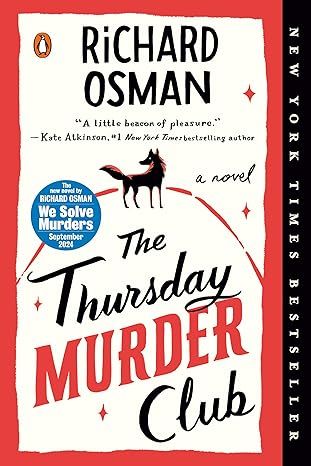
The Thursday Murder Club: A Novel (A Thursday Murder Club Mystery)
4.3
-
155,575
$6.33

Sapiens: A Brief History of Humankind
4.6
-
140,302
$13.49

The Butterfly Garden (The Collector, 1)
4.3
-
88,556
$9.59
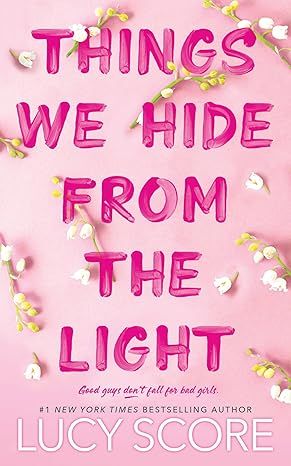
Things We Hide from the Light (Knockemout Series, 2)
4.4
-
94,890
$11.66
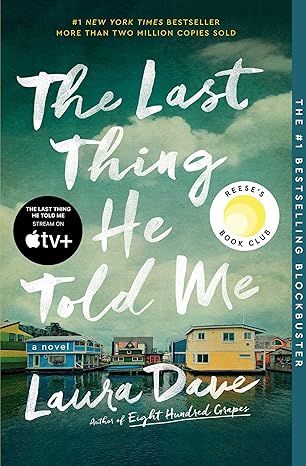
The Last Thing He Told Me: A Novel
4.3
-
154,085
$2.99
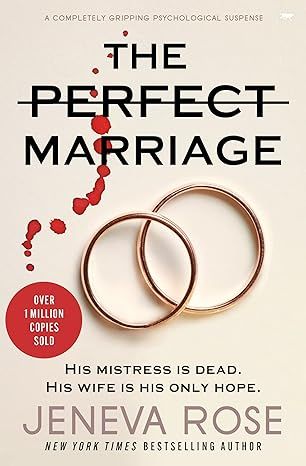
The Perfect Marriage: A Completely Gripping Psychological Suspense
4.3
-
143,196
$9.47

The Coworker
4.1
-
80,003
$13.48

First Lie Wins: A Novel (Random House Large Print)
4.3
-
54,062
$14.99
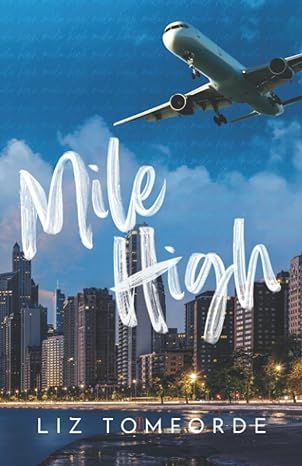
Mile High (Windy City Series Book 1)
4.4
-
59,745
$16.19

Layla
4.2
-
107,613
$8.99

The Locked Door
4.4
-
94,673
$8.53
